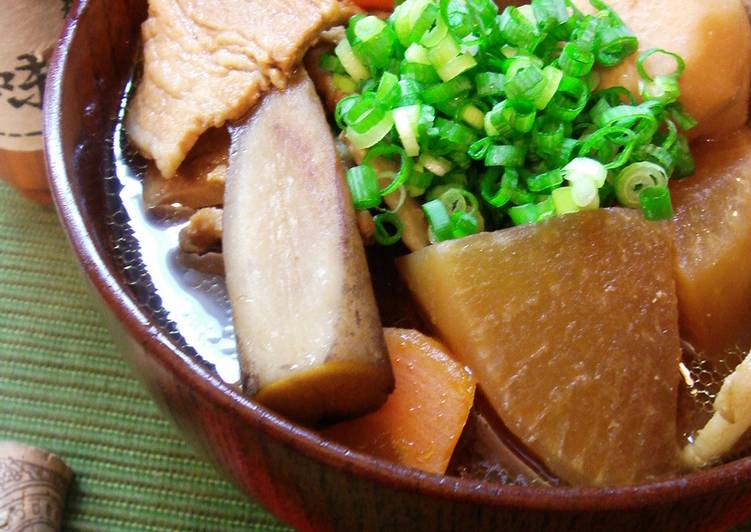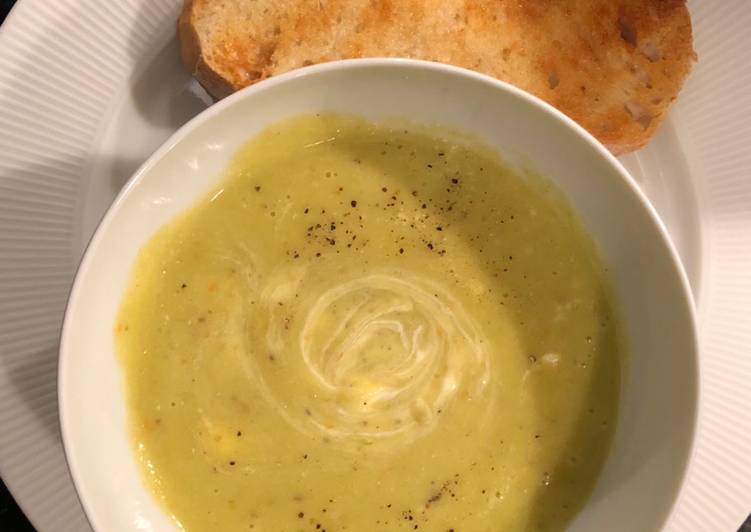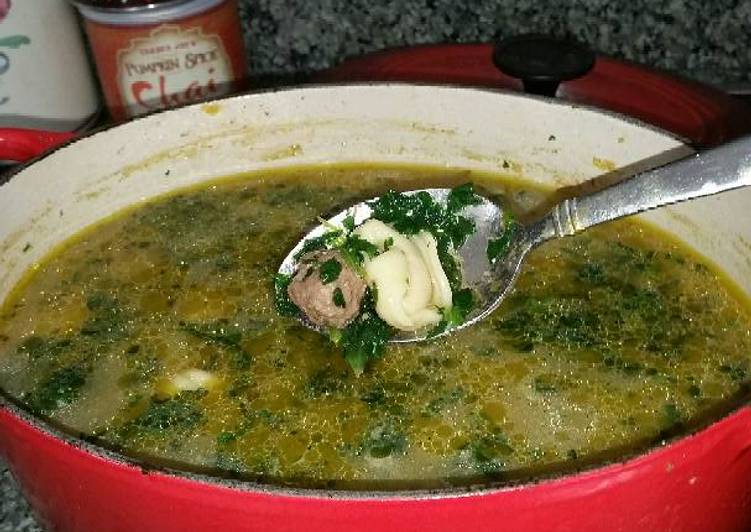
Hey everyone, it’s me again, Dan, welcome to our recipe page. Today, we’re going to prepare a distinctive dish, filling tonjiru (miso soup with pork and vegetables). It is one of my favorites. This time, I’m gonna make it a little bit tasty. This is gonna smell and look delicious.
Tonjiru (豚汁) is a hearty miso soup with pork slices and vegetables. Packed with loads of vegetables and a small amount of pork, tonjiru is quite filling but you will be surprised to know the calories in tonjiru are low. It is considered to be a winter dish in Japan but I can't see why we shouldn't have it all year round. Tonjiru (豚汁), literally meaning "pork (ton) soup (jiru)", is basically miso soup featuring pork and root vegetables.
Filling Tonjiru (miso soup with pork and vegetables) is one of the most well liked of recent trending meals on earth. It is easy, it’s fast, it tastes yummy. It’s appreciated by millions every day. Filling Tonjiru (miso soup with pork and vegetables) is something that I have loved my entire life. They’re fine and they look fantastic.
To get started with this particular recipe, we must first prepare a few components. You can cook filling tonjiru (miso soup with pork and vegetables) using 13 ingredients and 3 steps. Here is how you cook that.
The ingredients needed to make Filling Tonjiru (miso soup with pork and vegetables):
- Get 200 grams Pork belly, thinly sliced
- Get 1/4 Daikon (white radish)
- Take 1 Carrot
- Make ready 1 Burdock root
- Make ready 5 Taro root (satoimo potatoes)
- Take 1 slice Konnyaku
- Get 1 Green onion
- Get 1000 ml Strong bonito dashi stock
- Prepare 3 tbsp Blended miso
- Take 3 tbsp Red miso
- Get 1 tbsp Mirin
- Get 1 Sesame oil (to taste)
- Take 1 Ichimi spice or shichimi spice (to taste)
Tonjiru (butajiru) is a variant of Japanese miso soup where the diluted miso is added after simmering small pieces of pork and vegetables in dashi. Chunky enough for a light lunch, double or triple the ingredients because everyone will want a generous share. Tonjiru - Pork and Vegetable Miso Soup. Tonjiru is very similar to miso soup, but it contains thinly sliced pork and more vegetables.
Steps to make Filling Tonjiru (miso soup with pork and vegetables):
- Cut the pork slices into bite sizes. To prepare the vegetables: Peel, then cut the daikon, carrot, burdock root into rolling wedges by rotating the vegetables as you cut. Pre-boil the taro root but leave a slight crunch, and cut into bite sized pieces. Boil the konnyaku, and cut with a spoon into bite sized pieces as well. Chop the green onion finely.
- Heat the saucepan, add a generous amount of sesame oil, and stir fry the pork. When the pork is cooked through, fry the daikon, carrot, burdock root, taro root, and konnyaku until all the ingredients have been coated with the oil.
- Add Japanese soup stock (dashi) into the pot from Step 3. Simmer the vegetables while skimming foam off the surface until the vegetables are cooked through. Serve in a dish, and garnish with chopped green onion. If you'd like, sprinkle with ichimi or shichimi spice.
Tonjiru - Pork and Vegetable Miso Soup. Tonjiru is very similar to miso soup, but it contains thinly sliced pork and more vegetables. Popular vegetable ingredients for tonjiru include burdock root, konnyaku, seaweed, spring onions, daikon radish, carrot, tofu including fried tofu (aburaage), potatoes, taro or sweet potato, and mushrooms such as shiitake and shimeji. Tonjiru (or Butajiru) is a kind of Miso Soup with pork and a lot of root vegetables such as Gobo (burdock root) and carrot. Even though it is a Miso soup, Tonjiru tastes very different from ordinary Miso Soup.
So that is going to wrap it up for this special food filling tonjiru (miso soup with pork and vegetables) recipe. Thanks so much for your time. I am confident you will make this at home. There’s gonna be more interesting food at home recipes coming up. Don’t forget to save this page on your browser, and share it to your loved ones, friends and colleague. Thanks again for reading. Go on get cooking!

